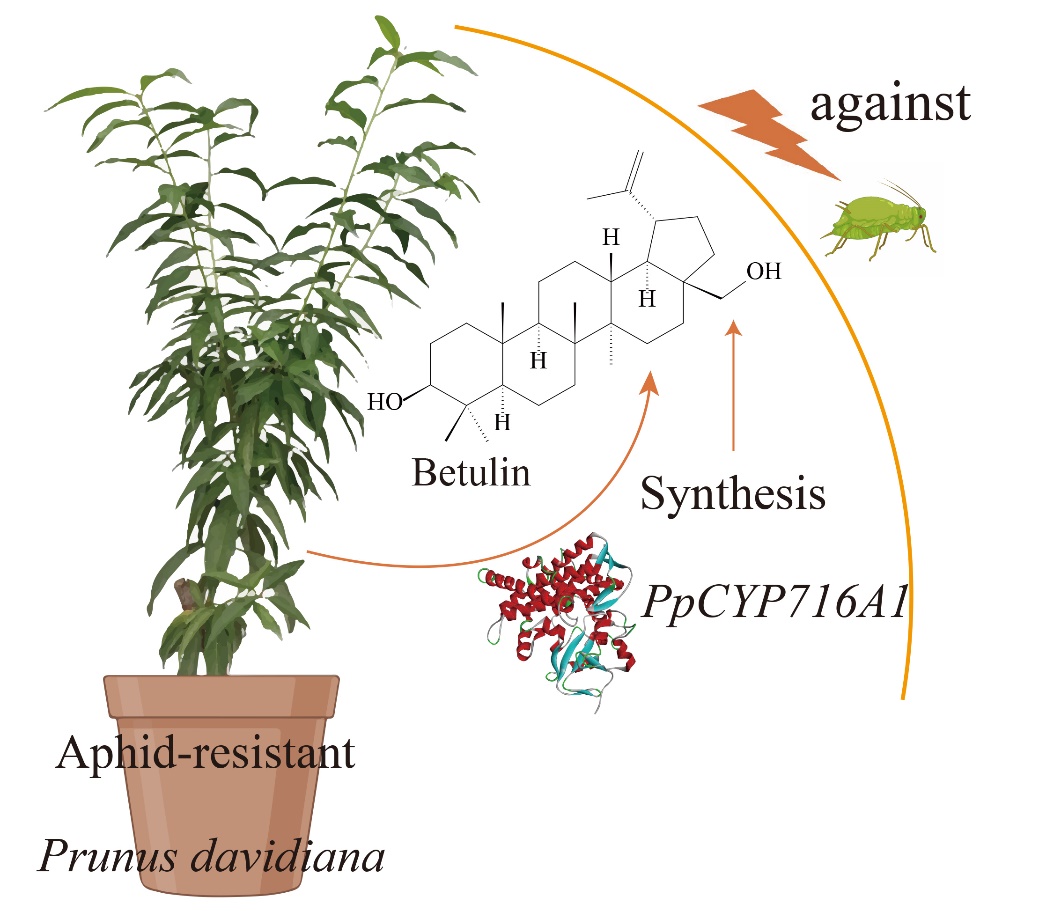Recently,the innovation group of peach resources and breeding made an important progress in the research on the mechanism of peach defense against aphids. A novel natural active ingredient, betulin, for peach against aphids was found.The discovery provides important support for the development of plant-derived green pesticides and the breeding of peach aphid-resistant varieties. The relevant research results were published in the Journal of Agricultural and Food Chemistry, and also obtaineda national invention patent.
The peach aphid, Myzuspersicae(Sülzer), is among the most devastating sap-feeding pests globally. Unfortunately, peach aphid, by ingesting phloem saps, excreting honeydew, and transmitting plant diseases, can critically decrease crop yields. It is exceedingly polyphagous with over 400 documented plant hosts, and displays extraordinary host adaptability. Fortunately, crop wild resistant germplasm possesses diverse defense metabolites that overcome pervasive host adaptability of peach aphid.

Pattern of resistance to peach green aphids of Prunus davidiana via botulin
Prunus davidiana, a close wild relative of the cultivated peach, displays strong resistance against peach aphid. In this study, using metabolomic, transcriptomic, and molecular methods, combined with bioassays,weshow that betulin possesses a strong toxic effect on aphids and exhibits hugely potential to act as a green defensive metabolite. Thus, the high content of betulin plays a crucial role in the resistance ofP. davidianato aphids. To defend against aphid infestation, P. davidiana increases the betulin content by enhancing the expression of CYP716A1. This work provides insights into the biochemical and molecular defense basis of aphid-resistance in plants.
This study was supported by the National Key Research and Development Program (2019YFD1000200), Central Public-interest Scientific Institution Basal Research Fund (Y2022QC23), and the Agricultural Science and Technology Innovation Program (CAAS-ASTIP-2018-ZFRI-01). All materials were supplied by National Horticulture Germplasm Resources Center, Zhengzhou Fruit Research Institute, Chinese Academy of Agricultural Sciences.PhD student Wang Junxiu and Professor Li Yong contributed equally to this study.Professor Wang Lirongwas the corresponding author.
Article links: https://doi.org/10.1021/acs.jafc.2c04422
Patent No. ZL 2021 1 0679076.1
By Li Yong(liyong02@caas.cn)
